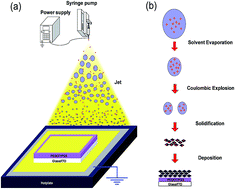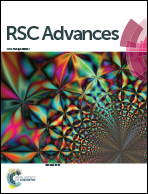Electrospray technique in fabricating perovskite-based hybrid solar cells under ambient conditions
Abstract
In this work, we utilized the electrospray technique to deposit the solidified crystal precursors on the substrate to investigate the transition processes in forming an orthorhombic methylammonium lead iodide film for fabricating perovskite planar heterojunction solar cells. The formation of solidified crystal precursors by the electrospray technique improves the de-wetting of the perovskite film on the substrate. Judicious selection of the applied voltage in the electrospray process generates crystal precursors of the appropriate dimensions. These as-electrosprayed crystals are the solid-state reactants for the halogen exchange and they form a uniformly covered film on the substrate under suitable annealing conditions. The hybrid device prepared by the electrospray technique exhibits a power conversion efficiency of 9.3%, a short-circuit current of 19.71 mA cm−2, an open-circuit voltage of 0.87 V, and a fill factor of 0.55. The electrospray technique with the solid-state reaction mechanism proposed in this paper would be ideal for the large-area coating of a perovskite active layer, and thus has potential for use in real mass production.



 Please wait while we load your content...
Please wait while we load your content...